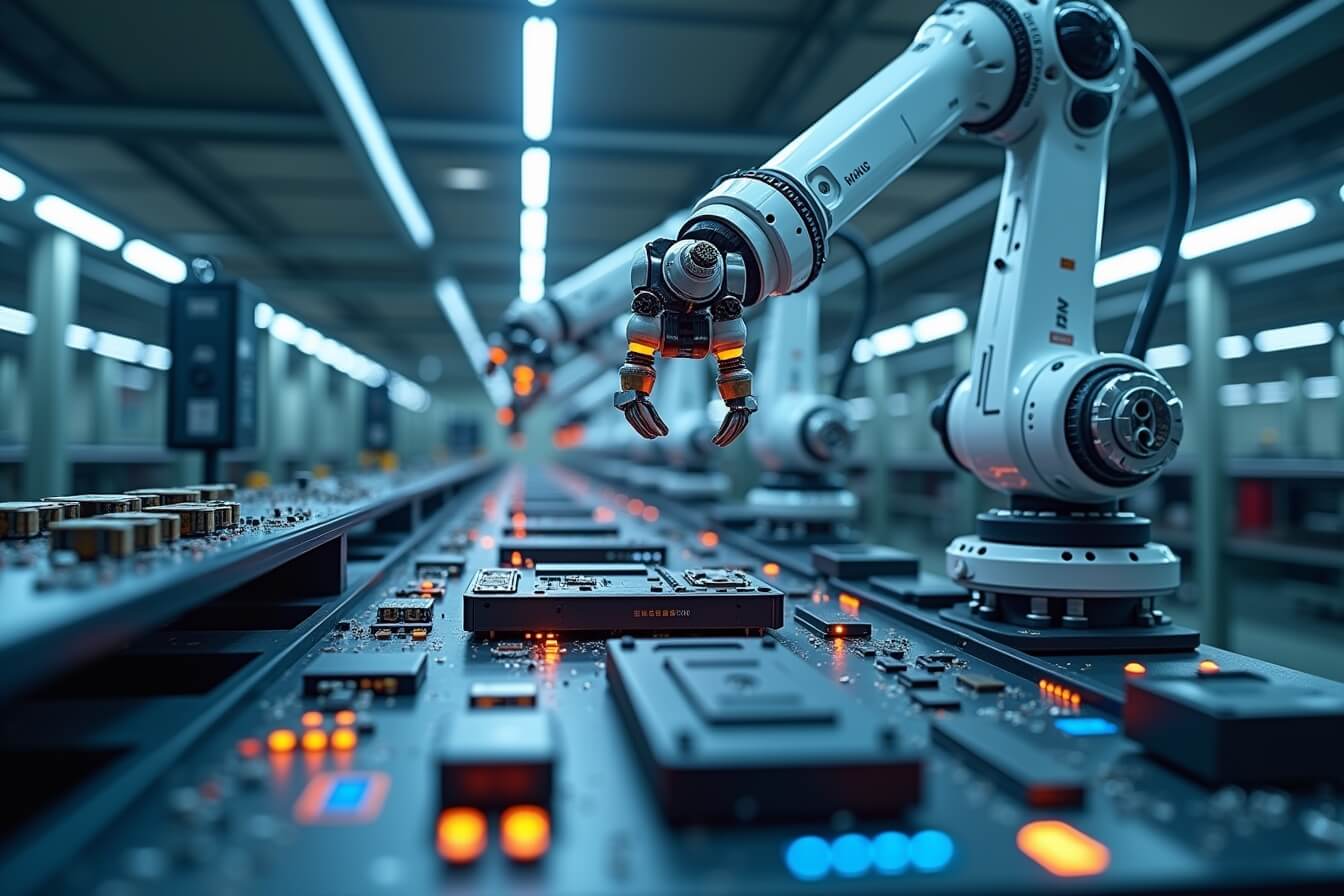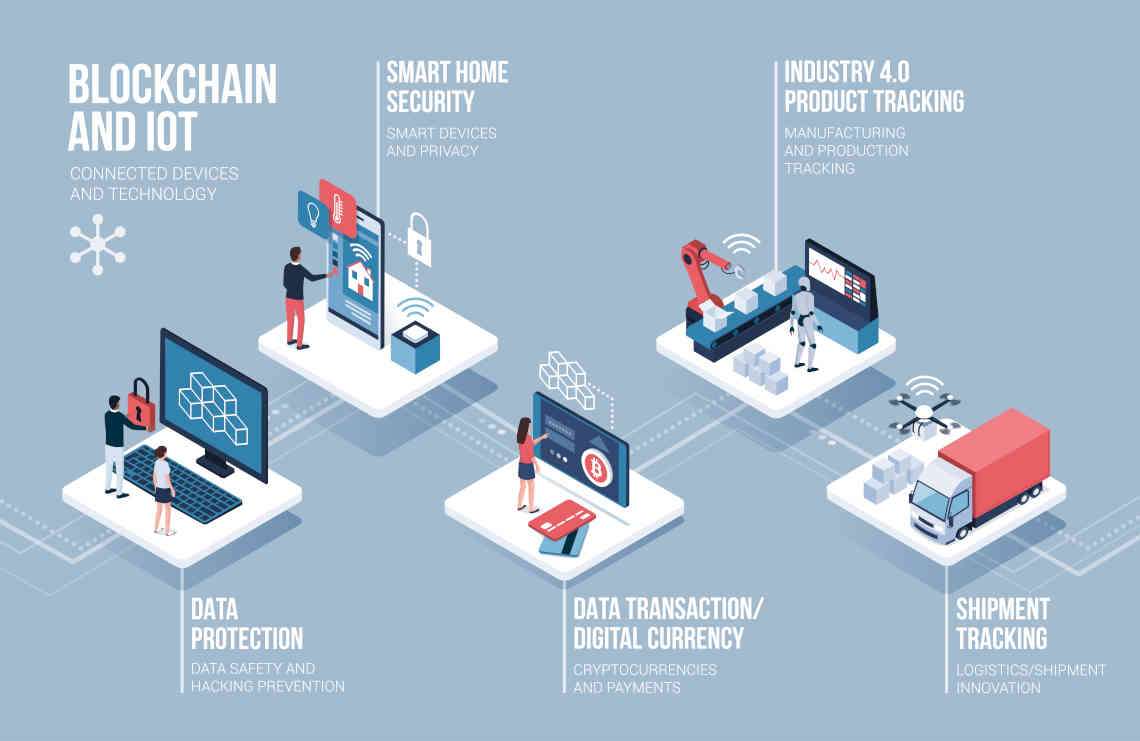区块链和物联网

Blockchain provides a decentralized and tamper-proof solution, ensuring trust and security in an increasingly connected world.
The convergence of Blockchain and the Internet of Things (IoT) is revolutionizing industries by enhancing security, transparency, and automation. As IoT devices become more embedded in daily operations, concerns over data security, device interoperability, and network efficiency continue to grow.
什么是区块链?
Blockchain is a series of fixed pieces of information. That information is time-stamped and managed by a cluster of systems not owned by one entity. It secures all the information and connects it by using cryptographic principles. Blockchain has no central authority since its ledger is immutable and shared. The data in it is open for any and everyone to view.
Therefore, anything built on blockchain is transparent to all by nature. All users are accountable for what they do. It has no transaction cost – it is an easy and effective way of passing information from one point to the other.
What is the IoT?

What are we referring to when we speak about the Internet of Things? The IoT includes everything from coffeemakers to cellphones. It also includes headphones, washing machines, lamps, wearable devices, and most other appliances. The IoT also refers to machine components. Examples include the drill of an oil rig and the jet engine of an airplane.
Other examples of “things” are vehicles, handheld electronics, devices, and home appliances. We’re also talking about sensors, mobile phones, and thermostats. The Internet of Things, or IoT, links any device with an on/off switch to the Internet.
Why Blockchain and IoT Matter Together
IoT devices generate massive amounts of real-time data across industries, but traditional cloud-based systems pose security risks and inefficiencies. Blockchain technology introduces decentralization, transparency, and immutability, allowing devices to interact securely without intermediaries.
✅ Enhanced Security against cyberattacks and data breaches
✅ Improved Device-to-Device Communication with secure transactions
✅ Real-Time Tracking for supply chains, healthcare, and smart cities
✅ Automated Smart Contracts for seamless operations
Uses and Applications of IoT

近年来,该行业取得了长足进步。有预测和估计未来该行业将进一步发展。我们已经看到了如何利用区块链来增加物联网设备之间的连接。未来几年,我们还可以探索各种其他用途。
- 第一个用途是数据安全领域。最近,我们在企业中,尤其是初创企业中遇到了很多安全挑战。网络犯罪分子通常会寻找公司基础设施中的薄弱环节。
- We can also use IoT to analyze information. Several companies revolve around data and information. They work to leverage it for their general use. Due to this, larger ecosystems that exchange and use data make use of IoT.
- 我们可以将其应用于数据隐私和存储领域。企业将对其销售或使用的数据量负责。访问数据并保护数据可能具有挑战性。区块链技术使其更易于管理。
- 我们可以在供应链中使用物联网。全球的供应链涉及不同地点的许多参与方。例如食品和制药公司的分销商。所有供应链都可以使用物联网和区块链的组合。
Key Applications of Blockchain and IoT
1. Supply Chain Management & Logistics
IoT sensors track goods in real-time, while blockchain ensures tamper-proof records of product movement.
🔹 好处:
-
-
Real-time product tracking from manufacturing to delivery
-
Fraud prevention through immutable transaction records
-
Enhanced efficiency and reduced operational costs
-
2. Smart Cities and Infrastructure
Blockchain and IoT power smart cities with efficient, secure, and autonomous systems.
🔹 好处:
-
-
Traffic management using IoT-connected smart lights
-
Secure identity verification for public services
-
Optimized energy usage through blockchain-based smart grids
-
3. Healthcare & Medical Data Security
Blockchain enhances IoT-driven healthcare solutions by ensuring data integrity and patient privacy.
🔹 Applications:
-
-
Secure storage of patient health records
-
Remote monitoring of chronic disease patients
-
Smart medical devices with blockchain-based authentication
-
4. Automotive and Connected Vehicles
Blockchain enables secure communication between IoT-connected vehicles and smart road infrastructure.
🔹 How it works:
-
-
Autonomous vehicles share real-time data securely
-
Decentralized ledgers prevent vehicle software hacks
-
Smart contracts automate toll payments and insurance claims
-
5. Industrial IoT & Manufacturing
Blockchain secures IoT-based manufacturing processes, ensuring trust and efficiency.
🔹 Key Innovations:
-
-
Real-time tracking of factory operations
-
Preventing counterfeit parts through blockchain verification
-
AI-powered predictive maintenance
-
Challenges in Blockchain and IoT Integration

While the benefits are vast, businesses must address key challenges:
1. Scalability Issues
Blockchain networks must process vast amounts of IoT-generated data without slowing down operations.
2. High Implementation Costs
Setting up blockchain infrastructure requires significant investment in hardware, software, and expertise.
3. Security Vulnerabilities in IoT Devices
IoT endpoints remain vulnerable to cyberattacks, making strong security protocols essential.
4. Regulatory and Compliance Hurdles
Industries must navigate data privacy laws and government regulations when implementing blockchain.
The Future of Blockchain and IoT
Emerging innovations will further enhance the blockchain-IoT ecosystem, including:
✅ AI-driven analytics for predictive insights
✅ Zero-trust security models for enhanced IoT data protection
✅ Decentralized identity solutions for connected devices
✅ 5G and Edge Computing accelerating real-time blockchain transactions
Final Thoughts from Ruth Stanat, CEO of SIS International Research
在 SIS 国际研究, we provide market intelligence, blockchain adoption strategies, and IoT research insights to help businesses implement secure and scalable blockchain solutions.
我们的纽约工厂地址
纽约州纽约市东22街11号2楼 10010 电话:+1(212) 505-6805
关于 SIS 国际
SIS 国际 提供定量、定性和战略研究。我们提供决策所需的数据、工具、战略、报告和见解。我们还进行访谈、调查、焦点小组和其他市场研究方法和途径。 联系我们 为您的下一个市场研究项目提供帮助。



